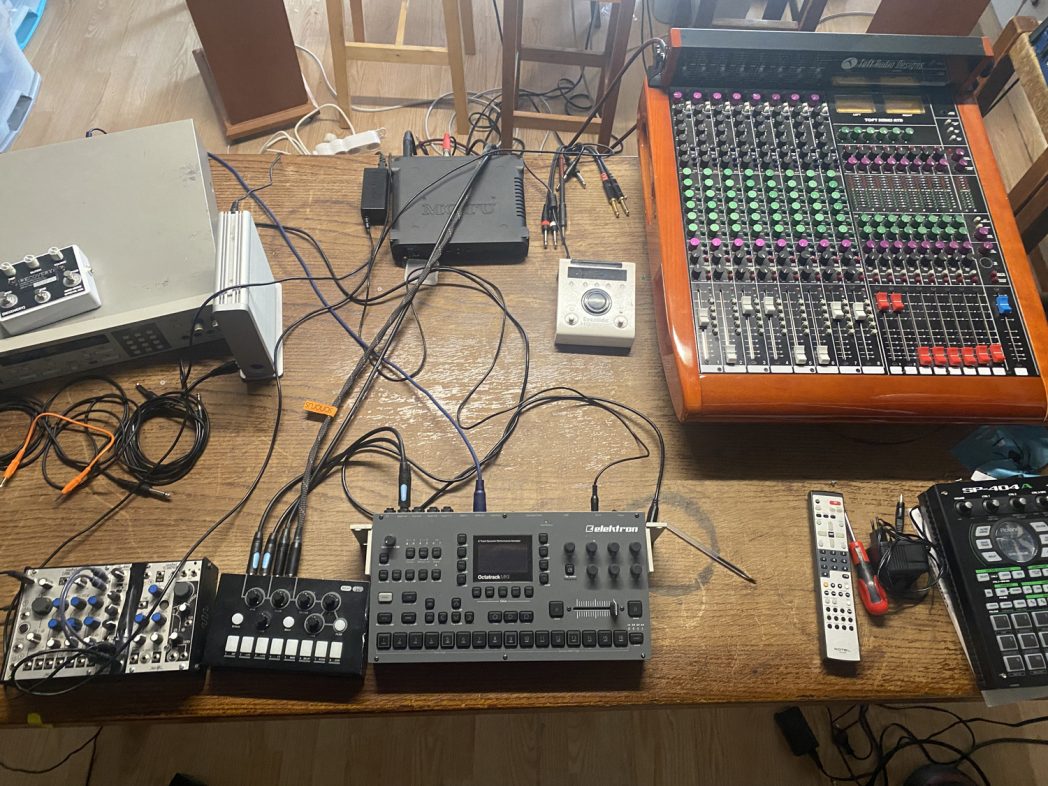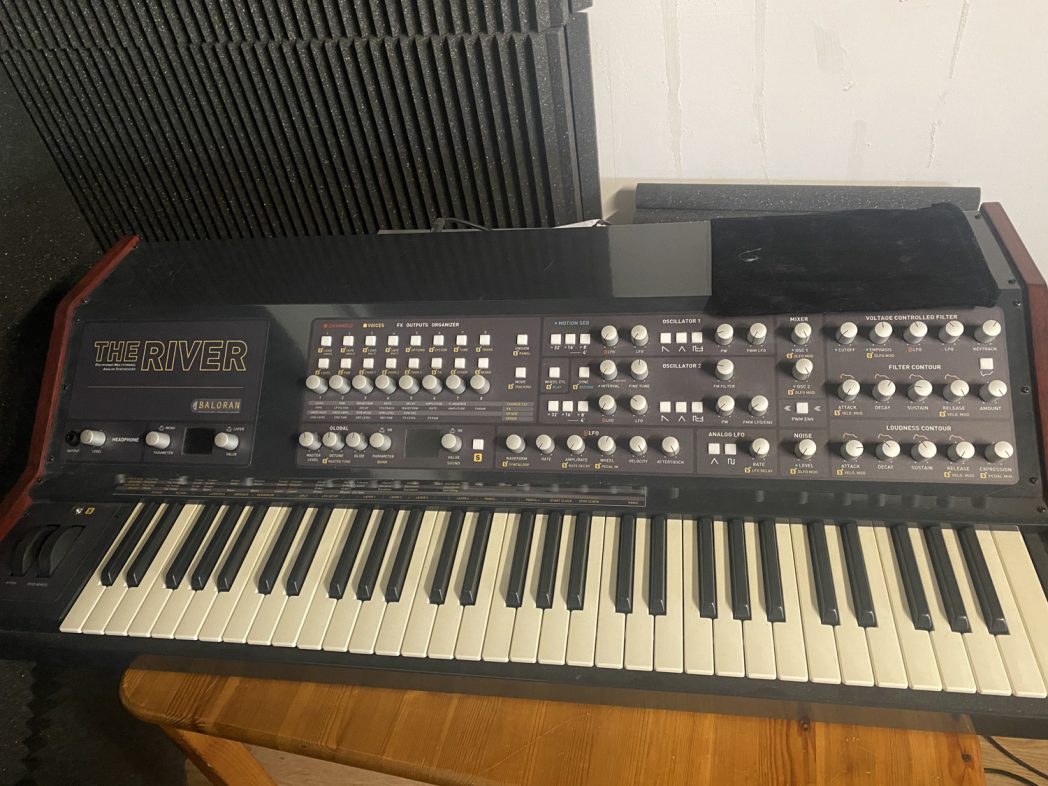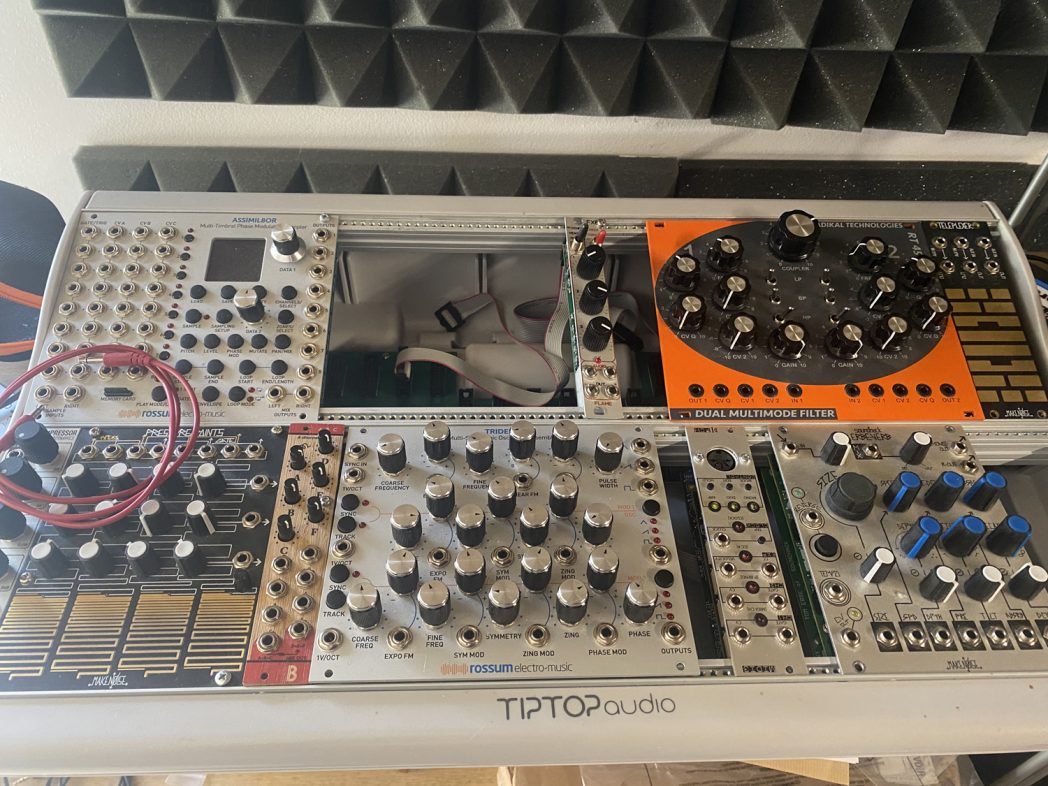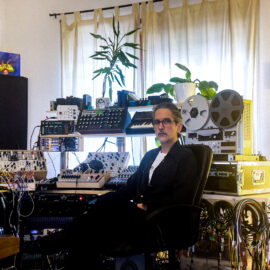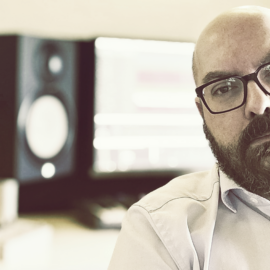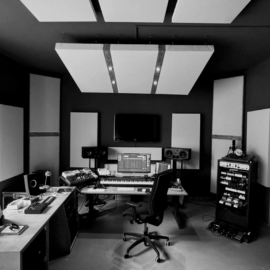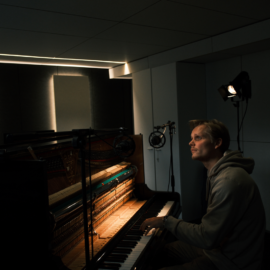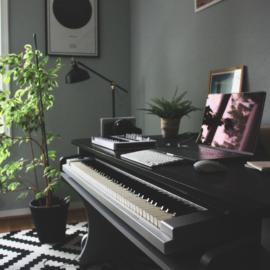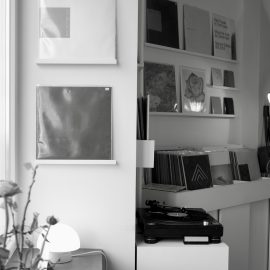Let’s start at the very beginning. Can you tell us how you got involved in composing, and what was your very first piece of gear?
I was a kid when I started playing the guitar, then with bands and later professionally, and I also taught this instrument for years. I rarely play the guitar now, and there are no guitar sounds in my recordings for a while, despite what I have read in some reviews, but yes, it is the instrument with which I learnt music. I played a lot of different styles, from Indian music to heavy metal and all sorts of «guitar» music, even some classical, all these experiences of courses contributed a lot to my knowledge of music and composition. During the years, I was also pretty active in the free improvisation and experimental music scene, and I had the chance to play with some top players, but then slowly, I moved to the world of electronic sounds, drums machines, noises, drones, and electroacoustic composition than to more «beat-oriented» music. Somewhere I had been attracted by all these sounds and the machine’s potential. After all these years, I can say I still do music for fun and the immense pleasure it gives me back. It will never be a «job» for me, even if I make my living with art and music and I conduct my project as professionally as I can!
How many different studio iterations have you gone through, and what does your final setup look like right now?
It changes constantly, I don’t remember exactly how many, but I’m sure the setup I now use will not be the final one! These days I have some modules and FX from Makenoise, Rossum, Oto Machine, Eventide, different analogue filters, and the main composition tool, which is the Elektron Octatrak. I also use a couple of synths, such as the Baloran The River and an AKAI VX90. I should mention I also have a Korg Lambda, which is a great one for pseudo-strings-sounds, but unfortunately, mine has to go for service, and I don’t know where, as these old chips are now impossible to find! My mixer and sound card have a limited role in my sound production because I don’t use the preamps except for some EQs. Instead of the usual studio monitors, I have hi-fi speakers from ProAc, which are excellent ones. Some years ago, I was very interested in studio gear and vintage analogue synths, vocoder etc. I had some Buchla, Moog etc. Sold everything. I finally understood what it means: the less, the better, and that I could do a lot with very few instruments as far as they are good, a sampler/sequencer and a couple of synths and FX are plenty enough. But I’m still monitoring the releases of new products, and sometimes if it looks inventive, I order some for testing.
Tell us about your favourite piece of hardware.
I don’t have one in particular, but some of the Rossum modules are excellent, their triple oscillator is brilliant, and the sampler is absolutely unique in terms of pitching/stretching sounds with no aliasing at all. Oto Machine FX are very good, too. I still use a lot the reverb box and the Biscuit. Then I have this polyphonic synth, The River by Baloran, which is something I gonna probably going to keep in my studio for a while. Huge sound. Otherwise, my main instrument is the Elektron Oktatrack, it’s a formidable machine despite many cons, such as the FX being very poor quality and questionable digital converters, it’s a real fight to make it sounds good, especially if you want to make your mix with it, which I guess was not the original purpose of the machine, so I must not complain! I’m working with it for more than ten years, and I’m still hesitating to go to something else as I don’t see any similar Swiss knife on the market. Also, for live performance, I prefer hardware as I think it’s much more stable, and it rarely crashes.
And what about the software that you use for production?
I use Logic to record my audio samples and sometimes to process them. I collect sounds from my different instruments or acoustic recordings. Sometimes I use Logic for complex electroacoustic pieces, but otherwise, I compose and mix everything with the Octatrack. MAGNETOSCOPE has been 100% created and mixed like that, I didn’t use any DAW and other external instruments, I did the same for my last release ATOTAL. It’s very old school and extremely simple: two stereo channels only! But the problem is the difficulty of processing each track separately with good EQ, FX and compressor… So, in the end, I‘m not sure it’s a good idea! Don’t do this, no recommendations here! I suppose the reason why I‘m not into computers and plugins is probably because I already spend so much time working on my computer screen every day, for non-musical reasons that I’m trying to avoid creating music with my laptop. But who knows, things can change…
Is there a particular piece of gear that you’re just dying to get your hands on, and do you think one day you’ll have it?
Not really, but I’m looking forward to the new Baloran mono synth, not released yet but promising peace of gear if, I believe the first demos…
Can you please share some aspects of sound design in your work?
It’s difficult, I think most of my music is made of «drones» and chords processed with «freeze» effects and important work on filtering, harmonic resonances, and discrete but constant variations. I also pay a lot of attention to the different types of overdrive, distortions, fuzz…
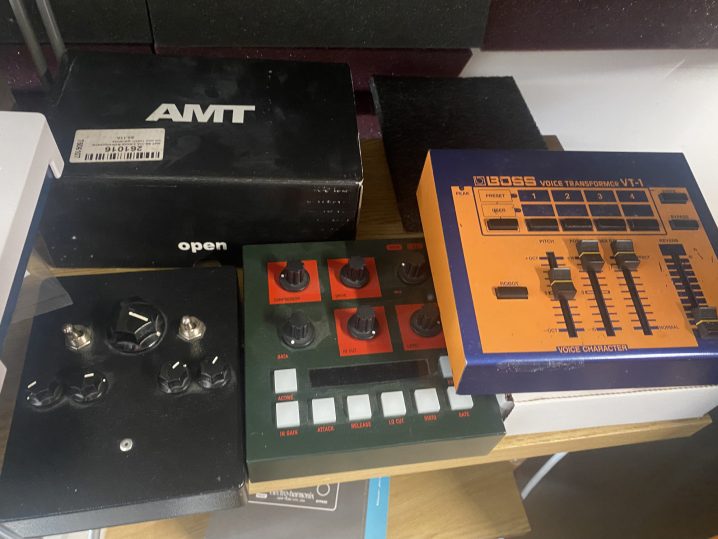
Any particular new techniques that you tried out for your new album?
In MAGNETOSCOPE, I mainly focused on getting very clean sounds with a lot of room and reverb, such as in track 2, « L.A. ». Otherwise, if I can share a « technique » that I recently developed, it’s my use of sidechain, not in the traditional « pumping » way bass line / kick drum, but sidechaining synth chords and bass, for instance, while using the compressor as a strong distortion/overdrive, you can hear this examples in tracks such as « Side total » (ATOTAL/Aesthetical) or Atotal (Ballades sur lac gelé /Raster media).
What does your live setup look like, and what do you bring with you when you travel for an extensive tour?
The Octatrack, a couple of make noise modules, reverb and oscillator, a compressor and my Akai VX90. But for many months I’m trying to replace this old and heavy analogue polyphonic synth from 1985 with a smaller one, actually, there are not so many possibilities, I have the Roland JX08 it’s ok but not analogue, which means not that fat, and the MIDI is quite unstable compared to the AKAI. I travel a lot, so I can’t carry on this big rack anymore, it’s too heavy. I’m trying to travel with my equipment in hand luggage only. Sometimes I also bring a small Digitech H9 unit and a fuzz pedal but no more.
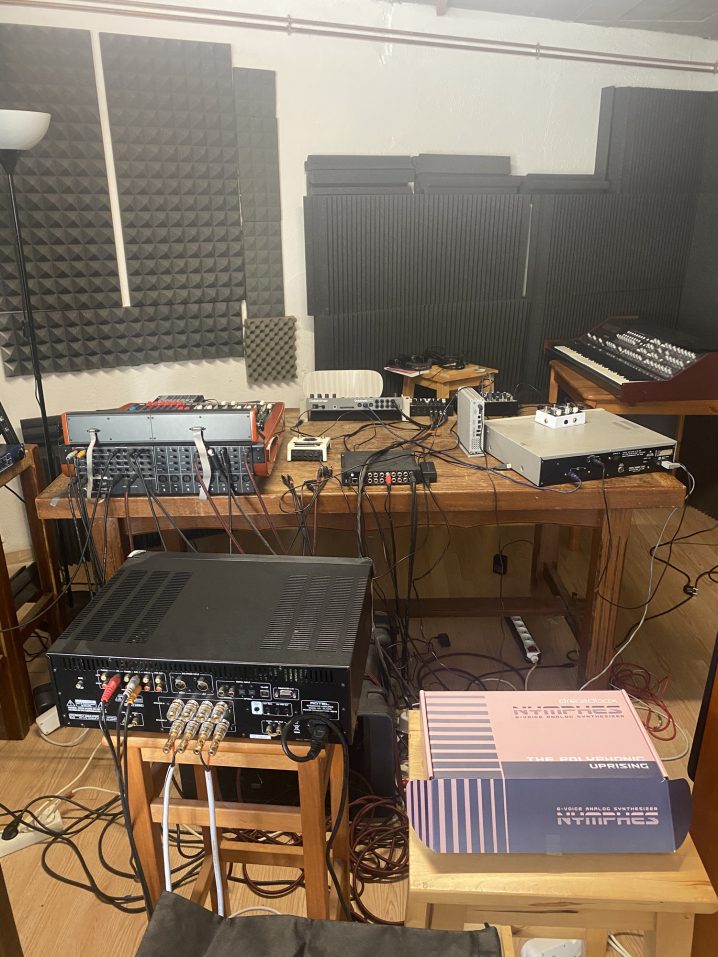
What is the most important environmental aspect of your current workspace, and what would be a particular element that you would improve on?
I could work in the dark, I don’t need anything in particular but a good acoustic, my workspace was a car garage, it’s in my house in the south of France; the acoustic isn’t great, but I do with it. I should probably move everything to another room, but I know well how it sounds there, and I‘m probably too lazy to change!
What can you tell us about your overall process of composition? How are the ideas born, where do they mature, and when do they finally see the light?
I always have some sort of concept. Atotal (2021) was a project to be played live with audiovisual artist Antoine Schmitt and the idea of creating something questioning « totalitarian images », so I went into something pretty brutal, cold and intense. The idea was very different for MAGNETOSCOPE as it first came from the sound itself. I was playing around with The River and these massive pseudo brass/trumpet-like sounds, recording a lot of very « melodic lines » which is not familiar in my music, but I started to compose with it, putting all these into the Octatrack, slowly I found a kind of architecture mixing these vintage sounds and my other materials. More recently, I have composed music for a new live AV concert with Antoine Schmitt again. The visuals are like waterfalls, but in pixels only, generative, and very poetic, so I went into this kind of contemplative and bit « ambient » direction. So for that one Cascades, the music is definitely inspired by the visuals.

After the piece is complete, how do you audition the results? What are your reactions to hearing your music in a different context, setting, or a sound system?
Listening to my music while driving my car, with all the noises around, is extremely useful, more for the composition than for the mix.
Do you ever procrastinate? If so, what do you usually find yourself doing during those times?
I don’t.
What gets you inspired?
Sounds, images, and movements are sources of inspiration, I work like a sculptor or an architect, but with sounds, lights and objects, I try to stay curious. Obviously, my own traumas have an important place in the writing of my performing arts projects!
And finally, what are your thoughts on the state of “electronic music” today?
Honestly, I don’t listen to that much electronic music; of course, I can see there are so many styles and niches. There are probably great things that I missed, but I can’t really do comments on it! Music creation evolves very slowly but surely.
